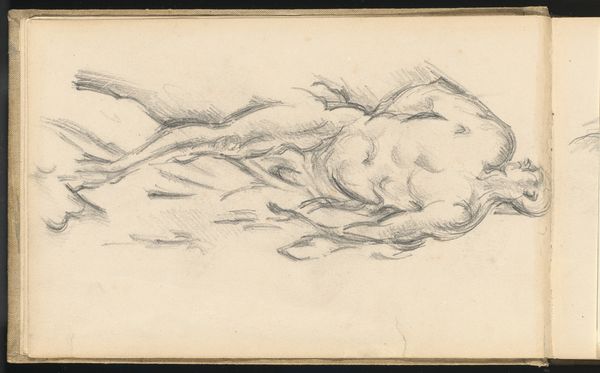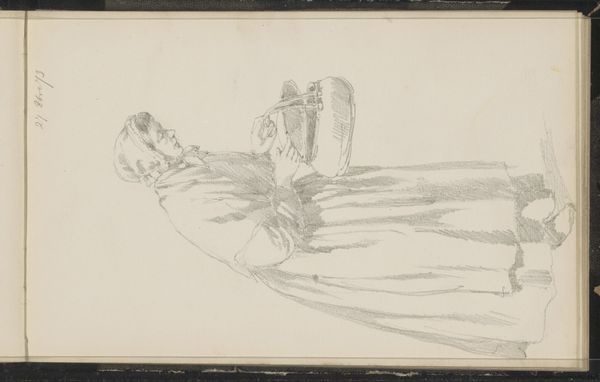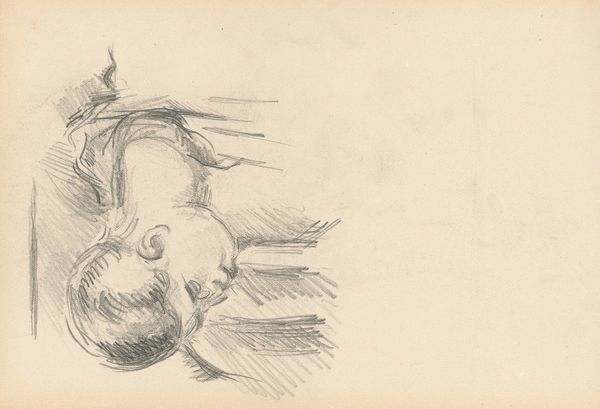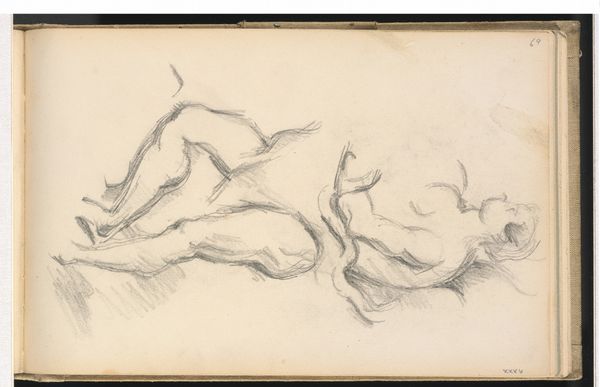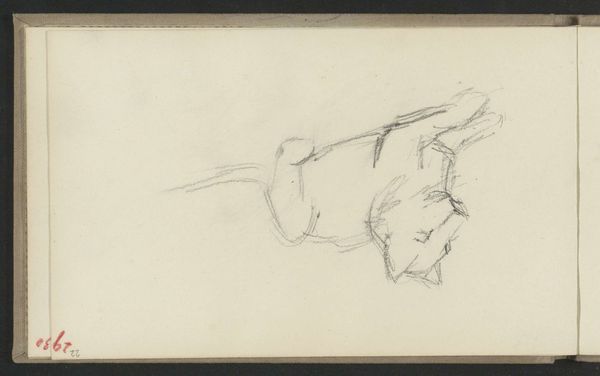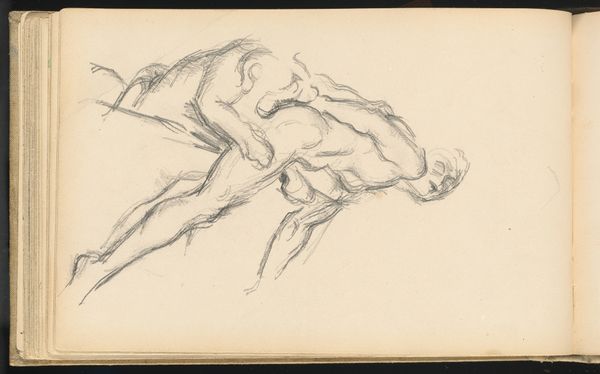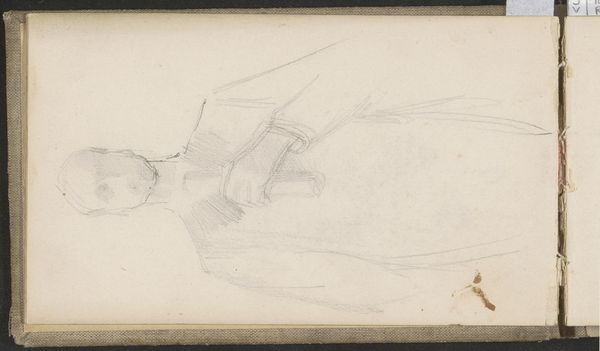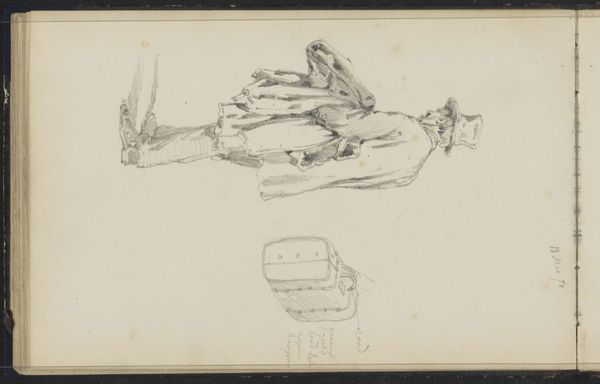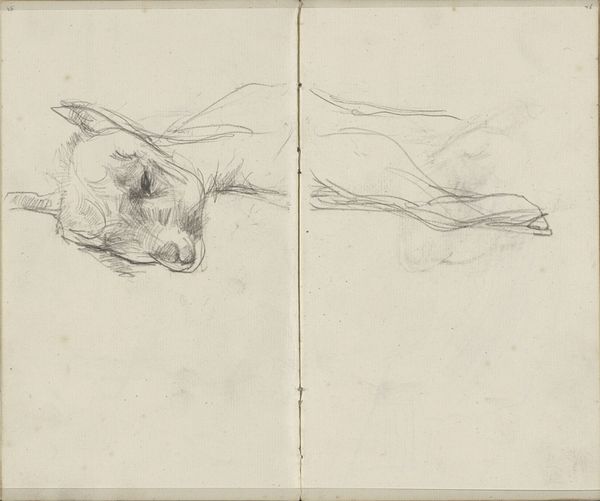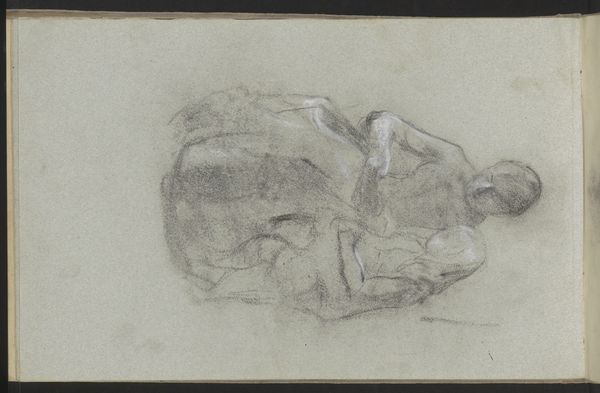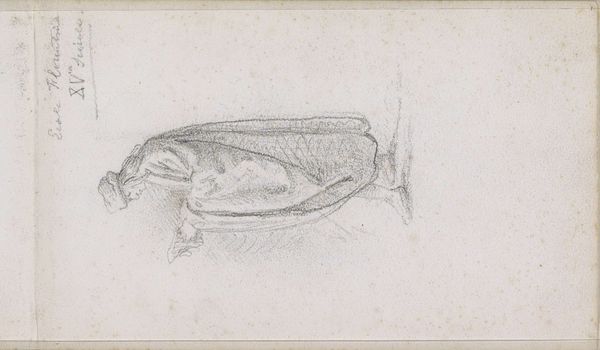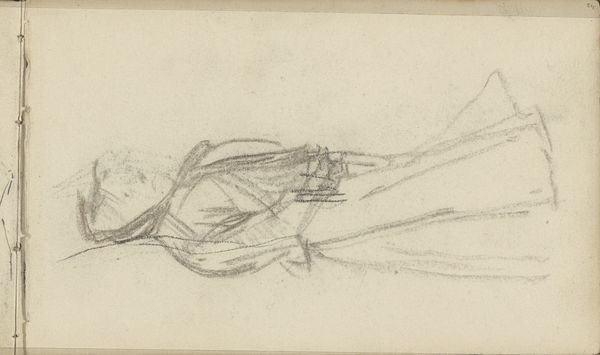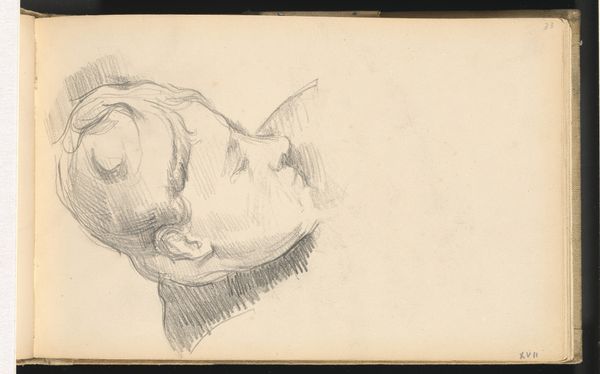
Study of the Allegorical Figure Bellona in Rubens' "The Apotheosis of Henri IV" 1879 - 1882
drawing, pencil
portrait
drawing
pen sketch
pencil sketch
pencil
academic-art
Dimensions: overall: 23.7 x 15.2 cm (9 5/16 x 6 in.)
Copyright: National Gallery of Art: CC0 1.0
Paul Cézanne made this pencil sketch, "Study of the Allegorical Figure Bellona in Rubens' 'The Apotheosis of Henri IV'," sometime in the late 19th century. Cézanne, living in France, engaged here with the grand tradition of European painting through his study of Peter Paul Rubens. Rubens’ painting, depicting the deification of King Henri IV, served a clear political purpose: to glorify the French monarchy. Cézanne, however, by isolating and studying one figure, Bellona, the Roman goddess of war, perhaps sought to understand the elements of power and violence inherent in such displays of state-sponsored art. This was a time of immense social change with burgeoning republicanism challenging the status quo. Cézanne's focus on a minor figure, rather than the King himself, might represent a critical engagement with traditional power structures. To fully grasp Cézanne’s intent, we can examine the exhibition culture of 19th-century France, the curriculum of art academies, and the political debates surrounding public art. The meaning of this sketch, like all art, is deeply embedded in its historical and institutional context.
Comments
No comments
Be the first to comment and join the conversation on the ultimate creative platform.
